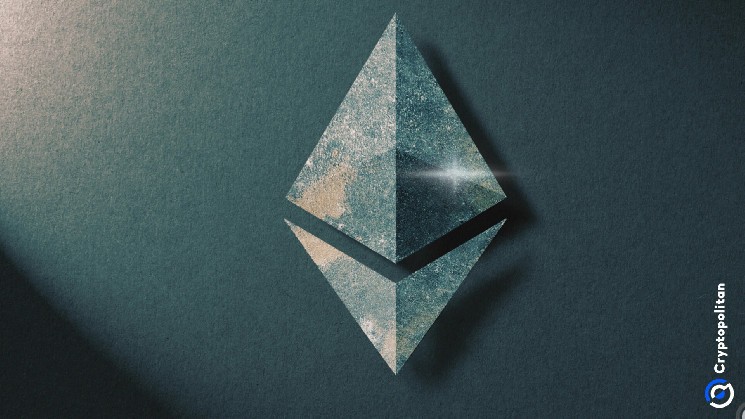Stablecoins volume on Ethereum reaches an all-time high despite market uncertainties

Recent data reportedly indicated that total Ethereum unfiltered on-chain transaction volume in August hit an all-time high of about $1.46 trillion. The data also highlighted that stablecoins transaction volumes have increased twice as much since the beginning of the year.
Ethereum’s on-chain data indicated about $652 billion in stablecoin transaction volumes in January. Since then, the volumes have fluctuated, with the second-highest record in April, where transaction volumes hit $1.18 trillion.
The stablecoin that recorded the highest volumes was MakerDAO’s DAI, which was $962.32 billion. The surge in DAI transaction volumes was allegedly caused by increased investor interest in decentralized finance. The analysis also speculated that the increased interest in DAI could indicate increased trust in algorithmic stablecoins.
Tether’s USDT and Circle’s USDC followed with $265.84 billion and $209.98 billion, respectively. According to the same data, USDT and USDC still hold significant power over the markets, and their infrastructure contributed to DeFi’s progression.
The two stablecoins still allegedly performed better than DAI in Ethereum’s filtered on-chain stablecoin volumes. The figures were speculated to indicate massive transfers or wash trading.
PayPal’s PYUSD records notable growth
8. $PYPL
Revenue growth: 8.2%
EV/EBITDA: 11.3xI believe $PYPL will be one of the best turnaround stories of this decade.
With innovative products, $PYUSD, cost cuts, revenue growth, and a new ads business that will top the likes of $UBER ad business, the bullish catalysts… pic.twitter.com/nkW5uf9K2b
— Oliver | MMMT Wealth (CPA) (@MMMTwealth) September 2, 2024
While PYUSD was not among the top 5 stablecoins that contributed to Ethereum’s high transaction volume, it has been recording significant growth since its launch. On-chain data showed that PYUSD’s volumes grew from $500 million to about $2.4 billion.
PayPal has been making strategic partnerships with different companies to ensure the success of its stablecoin. In August, the company introduced a PYUSD reward program in partnership with Anchorage Digital. The reward system allows users to earn without lending, staking, or reusing assets.
“Crypto innovators want to put their treasury cash to work but cannot compromise on asset security or accessibility. That’s why Anchorage Digital is proud to work with PayPal,…”
Nathan McCauley, CEO and Co-Founder of Anchorage Digital
At the time of writing, the stablecoin’s 24-hour trading volume is at $30.546 million, up approximately 10% in the past 24 hours.
Stablecoins remain the lifeblood of DeFi
The Block’s Insights newsletter revealed that stablecoin’s increased usage could indicate a maturing ecosystem. According to The data, the increased transaction volumes could also indicate deeper liquidity pools, less slippage, and better market efficiency.
For DeFi, stablecoin functionality and healthy markets are necessary for the coins’ power to fuel lending, yield farming, liquidity pools, and more. Therefore, a surge in transaction volumes and stablecoin usage could indicate healthier DeFi ecosystems.
The Block’s speculations match Paxos’ belief in stablecoins’ contribution to DeFi markets. In a June blog, Paxos outlined some advantages stablecoins have in DeFi ecosystems, including reducing price volatility, more accurate execution of smart contracts, store of value, and more.
The newsletter, however, explained that while coins like USDT and USDC remain dominant, newer stablecoins are creating competition. The data revealed greater innovation within the stablecoin industry, improving business models, designs, governance, and use cases.





 Bitcoin
Bitcoin  Ethereum
Ethereum  Tether
Tether  USDC
USDC  Dogecoin
Dogecoin  Cardano
Cardano  TRON
TRON  Chainlink
Chainlink  Bitcoin Cash
Bitcoin Cash  LEO Token
LEO Token  Litecoin
Litecoin  Dai
Dai  Ethereum Classic
Ethereum Classic  Stellar
Stellar  Monero
Monero  Cronos
Cronos  Stacks
Stacks  OKB
OKB  Hedera
Hedera  Cosmos Hub
Cosmos Hub  Maker
Maker  KuCoin
KuCoin  Theta Network
Theta Network  Gate
Gate  Algorand
Algorand  Polygon
Polygon  NEO
NEO  EOS
EOS  Zcash
Zcash  Tezos
Tezos  Tether Gold
Tether Gold  Synthetix Network
Synthetix Network  TrueUSD
TrueUSD  IOTA
IOTA  Bitcoin Gold
Bitcoin Gold  Holo
Holo  Dash
Dash  0x Protocol
0x Protocol  Zilliqa
Zilliqa  Siacoin
Siacoin  Enjin Coin
Enjin Coin  Ravencoin
Ravencoin  Qtum
Qtum  Basic Attention
Basic Attention  Decred
Decred  Ontology
Ontology  NEM
NEM  Lisk
Lisk  Nano
Nano  Numeraire
Numeraire  Waves
Waves  Pax Dollar
Pax Dollar  DigiByte
DigiByte  Status
Status  Hive
Hive  Huobi
Huobi  Steem
Steem  BUSD
BUSD  Ren
Ren  OMG Network
OMG Network  Bitcoin Diamond
Bitcoin Diamond  Bytom
Bytom  Kyber Network Crystal Legacy
Kyber Network Crystal Legacy  HUSD
HUSD